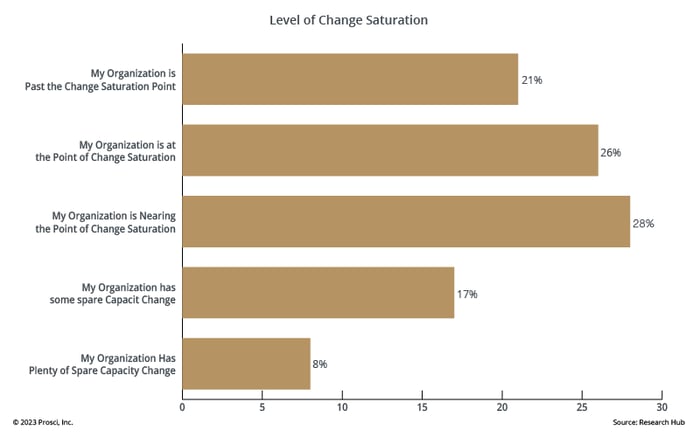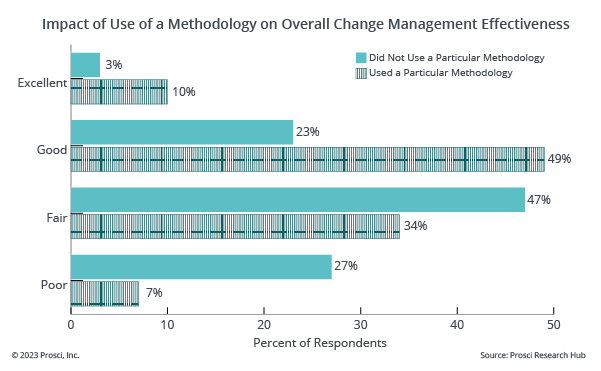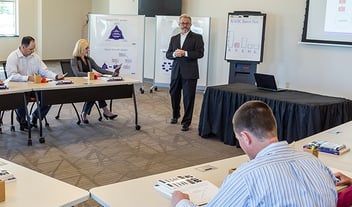7 Compelling Reasons for Deploying Change Management

5 Mins
Updated: January 9, 2024
Published: August 23, 2018

How would you complete this sentence: "We, as an organization, should work to embed change management and build organizational capabilities and competencies because..."?
A growing number of organizations are starting to move from a project-by-project perspective toward embedding change management and building organizational capabilities and competencies. These efforts are aimed at broadly deploying change management across and throughout the organization—what Prosci calls enterprise change management or ECM.
The Result of Enterprise Change Management
The result of ECM is that change management becomes the norm and routine. Addressing the people side of change is the expectation rather than the exception in the organization. Common processes and tools for change management are consistently and constantly applied. Individuals throughout the organization, from the CEO to front-line supervisors, develop their own personal competencies at leading change from wherever they sit in the organization.
The value to you as a change management professional might be clear, but you will need to build support and buy-in to take on enterprise change management. You will need to be able to articulate the ECM value proposition.
Business Case for Enterprise Change Management Template
Use our step-by-step guidance and examples to begin constructing your case
with supporting data and Prosci research.
7 Reasons for Deploying Change Management
A sample of over 200 business leaders and change managers attending a webinar on enterprise change management provided their articulation of the ECM value proposition by completing the following statement:
"We, as an organization, should work to embed change management and build organizational capabilities and competencies because..."
Their responses fell into seven main themes:
- Driving more successful change
Data and experience show that effective change management drives greater benefit realization and achievement of results and outcomes. Building change management capabilities means greater success on critical projects and initiatives. - Handling the amount of change occurring
Given the amount of and frequency of change occurring in organizations today, becoming better at implementing change is essential. - Addressing the costs of poorly managed change
Many organizations have examples, or even a legacy, of changes that were poorly managed, did not deliver results and created stress and confusion in the organization. Under-delivering on change is not tolerable going forward. - Aligning organizational practice with organizational values
This case is particularly relevant for organizations that espouse the importance and value of their people. - Preparing the organization for the future
The horizon for many organizations, and even industries, includes significant changes that are necessary to remain competitive and successful. - Creating consistency and efficiencies in approach
Change management practices across an organization can be more effective when there is a standard approach in place. - Building needed internal capabilities
Change management is viewed as an essential organizational capability and individual competency for employees.
Below are real responses from webinar attendees for each of the themes, along with complimentary data and findings from Prosci's benchmarking research:
1. Driving more successful change
"We, as an organization, should work to embed change management and build organizational capabilities and competencies because..."
- We need to effectively deliver on the projects we are investing in
- It is only through managing change that we will be able to achieve business objectives through people
- To maximize ROI of the project initiatives
- We need a continuous way to realize the value of our investments
- It will help us achieve our desired organizational goals
- It speeds up the implementation of new initiatives where the benefits last
- We need to ensure success in everything we do; we need to realize the benefits of our intended change
- It will enable adoption faster, more completely, and with less wear and tear on our employees
- We need to achieve results in our change efforts
- We need to achieve our business outcomes and ROI
- The value of change is maximized
- It will help us deliver projects across the company with lower costs, more efficiency and better overall user adoption
2. Handling the amount of change occurring
"We, as an organization, should work to embed change management and build organizational capabilities and competencies because..."
- Change is constant
- We have so much change happening all the time and we need to manage it more consistently
- We are engaging in transformational change in every function of organization
- The magnitude of change necessitates the need
- We have an unprecedented amount of transformational change and we need those affected by change to know that we know it and are dealing with it
- The increasing level of demand for change is beginning to affect our effectiveness as an organization
- Major changes are coming soon and there is a lot of resistance to changing
- We are going through tremendous change, and people are confused and fearful

3. Addressing the costs of poorly managed change
"We, as an organization, should work to embed change management and build organizational capabilities and competencies because..."
- We're not getting nearly as much ROI on changes without change management
- We are not achieving the ROI we anticipate due to non-compliance with changes implemented in our business
- The risk of rework is extremely high
- We spend so much money on programs and projects to make changes in the enterprise that are not well adopted because the change is not well understood by the staff and clients
- We waste a lot of time fixing problems due to gaps
- To eliminate complexity and waste associated with mis-managing change
- We can't afford to waste time or money
- Without managing change we will be unsuccessful at our various initiatives
- We have a history of investing significantly in strategic efforts and NOT realizing the expected ROI for these strategic efforts
- We don't do it now and suffer greatly
4. Aligning organizational practices with organizational values
"We, as an organization, should work to embed change management and build organizational capabilities and competencies because..."
- Our people are our greatest asset. Without them, this will not be successful
- It aligns with our core value of doing the right thing
- Because it is the right thing for the people affected to be successful
- Our people are our most valuable asset - change is about the changes to their work, and we need to make sure those "assets" understand what their new roles are
- It addresses the greatest asset, our people
- It is consistent with our process-driven culture, will help to engage our members, and improve our organizational effectiveness
- We care about our people and the people we serve
- Every project deserves a focus on people
5. Preparing the organization for the future
"We, as an organization, should work to embed change management and build organizational capabilities and competencies because..."
- We've developed a future strategy that is going to drastically change our entire industry
- It is essential for the success of the organization
- Our company's growth and future success depends on our people's ability to adapt to market forces in and out of our control
- It would make us more effective and more profitable
- It's clear our industry is changing rapidly and we don't want to be left behind
6. Creating consistency and efficiencies in approach
"We, as an organization, should work to embed change management and build organizational capabilities and competencies because..."
- We would all speak the same language
- It will optimize the resources and extend the best practices in one project so that whole organization benefits
- We lose too much time and money misunderstanding each other between methodologies
- It is much more efficient to have one standard approach that can be applied throughout the organization and tear down silos that can be built

7. Building needed internal Capabilities
"We, as an organization, should work to embed change management and build organizational capabilities and competencies because..."
- Change becomes a core capability of the enterprise
- Managing change is a competency for all, which empowers everyone and improves output and personal satisfaction
- We have seen good results in using a structured approach to change, these results could benefit many departments and divisions if it was enterprise wide
Start Building
Change Management Capabilities
What would your organization look like if it began a journey toward enterprise change management today? As you “Stand in the Future” and see a vital and successful organization thriving in an ever-changing world, articulate the unique value proposition for ECM that is most compelling to your leaders and resonates best with your organization. Use these seven reasons for change management deployment as the starting place for building the case for enterprise change management.



